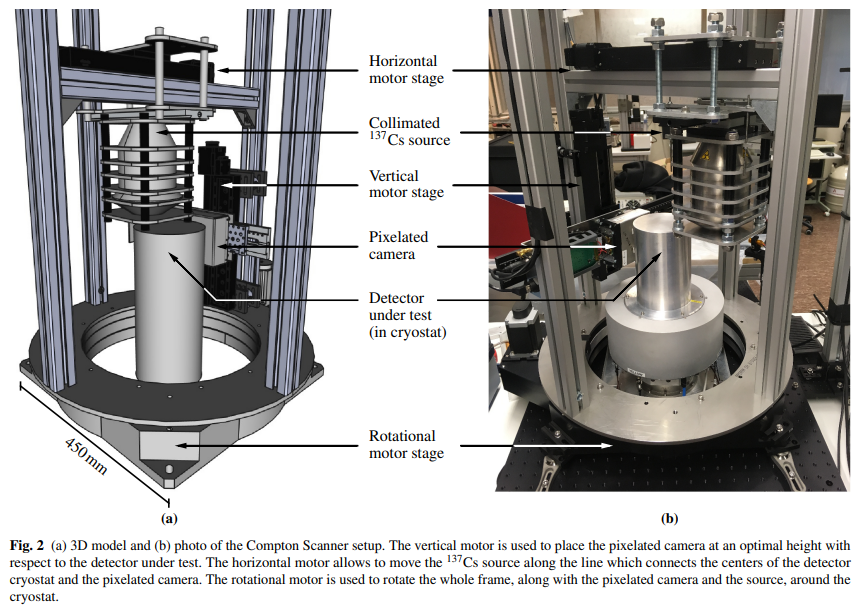M400 Application Case: Calibrating Segmented HPGe Detector for Fundamental Physics
High-purity germanium (HPGe) detectors are used to probe fundamental physics ranging from dark matter to double-beta decay.
Precise, spatially resolved characterization of HPGe detectors is required for these specialized experiments.
Traditionally, this characterization process is conducted via slow, double-collimator measurements. In contrast, a recent effort by the Max Planck
Institute used an H3D M400 module to rapidly characterize a segmented HPGe detector using only a single collimator by leveraging intrinsic
position sensing in H3D's 3D CZT technology. The M400 and HPGe were placed in a "Compton Scanner" to execute the measurements, which involved
using horizontal, vertical, and rotational motors to move the collimated source and the M400 around the cryostat containing the HPGe.
Moving forward, this novel CdZnTe-based characterization technique will expand the bounds of what is possible in fundamental physics.
Read more about the Compton Scanner in this article published in the European
Physical Journal C.
Below you can see the single-collimator measurement geometry used to characterize a HPGe crystal. The H3D M400 is labeled as "pixelated camera":

Below is a chart showing measured coincidence spectra collected using the segmented HPGe detector (horizontal axis) and the H3D CZT detector (vertical axis). The clear diagonal line corresponds to the full-energy absorption of the 662-keV photon from Cs-137.

Contact H3D or Dr. David Goodman (dgoodman@h3dgamma.com) directly for more information about CdZnTe-based gamma-ray spectroscopy.